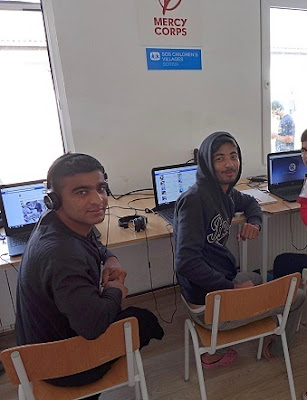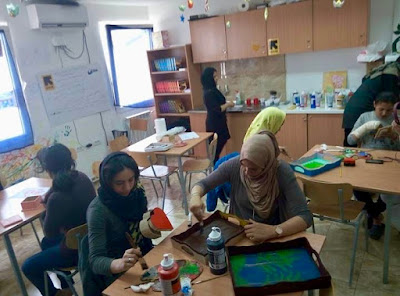How much is your life worth?
For Mohammad, the answer was clear:
6,000€
 |
| This is Mohammed. |
For that price, a Turkish smuggler promised to get Mohammad to France in 15 days.
He has been in Serbia for 8 months (on and off), but is not the only one who has been swindled out of his life savings and all personal documents, in return for barely half the promised journey.
Yet, Mohammad says he would pay the price all over again, "if given the chance to escape."
But, what was he escaping from? Mohammad studied management and public relations at a university in Singapore, and worked at the Dubai International Airport for six years, before fleeing from his native Pakistan when Taliban insurgents entered a nearby town.
However, Mohammad told me stories of people he's met along the way, who aren't escaping near-death. Just debt. Running away from their homes in hopes of making a life for themselves somewhere more economically stable. "They are not refugees, they are immigrants. We want to survive, they want the 'American Dream' in Europe."
 |
As we walked through the warehouse, these boys were adding blankets to their 'fort' for warmth that night.
Mohammad informed me that he sleeps in there, along with a lot of the unaccompanied minors he says
that he has taken "under his wing." |
One of the older boys in the group chimed in with a story he wanted to share about his journey, and had Mohammad translate it to us, line by line.
He had also paid a Turkish smuggler to take him to Subotica, a Serbian city near the Hungarian border. There were about 20 or so of them huddled in the back of a truck for hours in freezing December temperature, with no light apart from their dying cell phones and no 'bathroom breaks'. At long last, when the truck stopped, and the doors swung open, it was the middle of the night. They were right in front of a sign that read Subotica, which was barely visible.
By morning, the boy says, everyone noticed something was wrong. Their instincts proved correct; the smugglers had stollen a street sign from Subotica, and posted it in a small village a few hours outside of Belgrade, which is practically in the middle of the country.
The entire scenario sounded surreal to me, almost unbelievable. Until some of the other boys began affirming the story. Mohammad, himself, even had photos on his cell phone of a 'Subotica' sign from the time smugglers dropped him off, and a 'Lazarevac' sign the next day, in the same place
In that situation, Mohammad says they could have gone to an asylum camp nearby or come to the now-famous warehouses behind the bus station in Belgrade. He chose the option that he felt he had more control over; he didn't want charity and he definitely didn't want to feel locked in, "like cattle."
 |
The boy in the blue relied his smuggling story through Mohammad.
He said he was from Syria, but didn't want to give his name. |
When I asked why they didn't even consider going to camps during the winter, when it fell to -16°C, all the refugees who collected around us gave similar answers to Mohammad.
The reasoning was the same as before: uncertainty masked as fear for their options in the future.
I still wondered why Mohammad gave up on each attempt to continue his voyage, since he knew he wanted to go to Norway.
His response was "health," but then he pointed to two young boys by a fire, "and them."
The boys, whose ages were 10 and 12, are brothers, and apart from each other, they are alone. Mohammad told me they are from Iran, and learning Serbian. Other than that, he didn't want to talk about the boys or have their picture taken, "out of respect for their family." Nonetheless the two followed Mohammad the entire while I spoke to him.
In these warehouses where they are living, they create fires for warmth, but the materials that keep these fires alight are most commonly plastic and other toxic materials. Most of these refugees have become ill to some degree due to the fumes, and Mohammad, who is in his late-thirties, says he is no exception with a respiratory infection.
 |
This little 'fort' would house at least 3 men, all sleeping around the fire that's barely visible from the smog.
They light a fire as soon as temperatures begin to drop outside. |
There are volunteer doctors of nurses who come to the warehouses, once or twice a month, but they don't really do much to help, "they just give us cough drops and some band-aids if we get hurt." Symptoms of dizziness, exhaustion, shortness of breath, and coughing fits, seem common among the groups who lived there during the winter, when Médecins Sans Frontières (Doctors Without Borders) handed out blankets and tended to mass instances of frostbite.
When he first arrived at the warehouse, he says he was severely fatigued, "I slept for days when I got here. Every muscle hurt."
He ardently believes that had he been younger, he would have carried on, and reached Norway by now. Mohammad says that when he sleeps, he still dreams that he did in fact make it. He sees himself working in a "big hotel" in Norway, as a manager in "a nice blue suit."
When he now recounts the smuggler who brought him here, he likens the man to a "devil."
Mohammad says "I made a deal to survive, and I am alive. Just barely living, but still alive."
*
Name has been changed at subject's request.









































